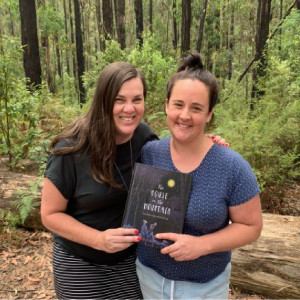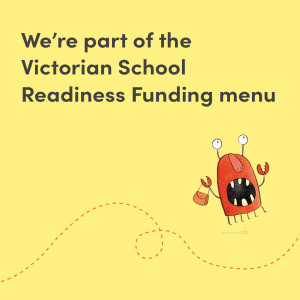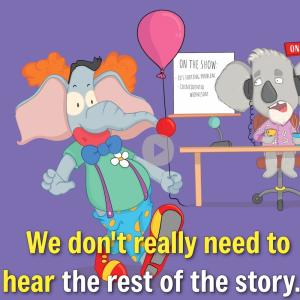5 Toolkit Tips - Helping Children Process Challenging Topics
30 Jan 2020

This season, Australia’s bushfire crisis has dominated print and social media. In our global and digital world, it is difficult to shelter children from images of natural disasters and humanitarian crises.
Naturally, with exposure, children are likely to respond to these images with curiosity and concern for themselves and for others. Instead of protecting children from the frightening and upsetting local, national and global events that confront us every day, we can shift our focus towards providing them with opportunities to share their feelings and ask questions; to seek answers and understandings; to process new knowledge and reconcile events; to find hope; to develop empathy and resilience and to take positive action.
Whether responding to Australia’s current bushfire events or discussing other distressing events with children, it’s handy to have a toolkit of strategies or activities that provide children with these opportunities. Which element of response to use will depend on the age of the child, their direct or indirect connection to the event and the severity of their concern.
Below is a summary of activities from our Classroom Ideas that educators (or parents and carers) might add to their toolkit when discussing events of this nature with children.
1. Give children opportunities to share their emotions and worries in a safe and attentive space.
● Invite children to create a Word Splash or contribute to a Graffiti or Worry Wall, by writing thoughts, feelings, worries, concerns or words they associate with the occurring event.
● Assist children in completing graphic organisers such as KWL (Know, Wonder, Learn) or STW (See/Think/Wonder) charts based on their prior knowledge, thoughts and any questions they might have about the event.
● Lead Circle Time sessions, where children feel safe to verbalise and share their worries and/or their own experiences or connections to the event.
2. Help children find factual or accurate answers to the questions and concerns they have about the event.
●Create a mini-library in your classroom of age-appropriate fiction and non-fiction books relating to the event (e.g. bushfires, war etc.)
● Invite a member of your local emergency service to speak to the class about the event, discussing information such as causes, impacts and recovery efforts.
●Research the location, frequency, severity and recovery efforts of past events, comparing similarities, differences and learnings.
3. Provide opportunities for children to process their knowledge of the event, and reconcile the sequence of events that have occurred; sometimes this might include understanding the science or history behind the event.
● Invite children to use images or information as stimulus for your own emotive writing or artistic response. You might like to view other people’s visual or written responses to the event, which can be found through an internet search. The artwork by children from Healesville Primary School after the Black Saturday bushfires is an example.
● Encourage children to write a report article or record a news report about the cause, effects and recovery efforts, based on any information learned through research.
● Invite a member of the local Indigenous language group to your classroom to share their knowledge of the local Indigenous seasonal calendar and how it influences their relationship with the environment. E.g. the role fire plays in maintaining a healthy ecosystem.
4. Help children search for examples of hope and human kindness amongst the devastation, loss and grief.
● In times of distress, children’s stories offer just the right amount of information for children, often alongside a pinch of humour or tenderness. They always offer hope and they help us to develop empathy towards others. When viewing stories we might encourage children to think about or discuss:
a) Which part of the story (text or illustrations) had the biggest impact.
b) How the author and illustrator taps into the senses of sight, smell, sound, taste and feelings to tell the story, and why they did that.
c) The author’s intended purpose or message of the story.
d) Any symbols used by the authors and illustrators in the story.
e) Examples of hope and recovery within the text, the body language and facial expressions of characters or in their actions.
Story Box Library features an array of stories that would be suitable for this task, including stories about bushfires (House on the Mountain, Summer Time and A Walk in the Bush), drought (All I Want For Christmas is Rain, Water Witcher and It’s a Mirroocool!), displacement (Feathers) and loss and grief (My Brother and Fox).
Out, The Treasure Box, Suri’s Wall, Home and Away and My Two Blankets have references to war and other humanitarian issues, such as detention centres. While other stories with general themes of hope and recovery include Sorry Day, Girl on Wire, Storm Whale, The Duck and the Darklings and The Hush Treasure Book.
Of course, Lian Tanner, in her blog post ‘My Country is on Fire’, also reminds us that, ‘When the world is so uncertain, both adults and children need books that make us laugh. We need books that will take us to places where there are dragons or wizards or multi-storey tree houses. We need books that will allow us to escape for a little while, and remind us of the power of imagination and the possibility of change.’, and for that Story Box Library has an ever-growing catalogue of stories for laughter, escape and imagination.
● Invite guest speakers to share their experience with children, view testimonials published online or read interviews such as the interview with Ella Holcombe on the Story Box Library blog.
●Undertake a personal inquiry into an individual, group or an Australian emergency service or aid organisation that provides immediate or long-term assistance to individuals affected by emergency events. Some questions you might like to consider include:
- Where is the organisation based?
- How does the organisation assist in emergency events?
- What are some of the volunteer roles within the organisation?
- How can someone join the organisation?
5. Empower children with positive actions they might be able to take in the case of an emergency event.
● Work together to organise or contribute to an event to help those affected by the event (e.g. fundraiser, book drive etc.)
● Read information available on state and territory fire and emergency services websites to learn about dangers, warning systems available for emergencies in your state.
● Discuss and help children develop their own emergency management plans, including preparations and actions to take in the case of an emergency event.
● Encourage pro-active research and innovation by undertaking relevant STEM activities such as designing and building a proto-type of a bushfire-resistant home, or strategies for combatting drought or ocean plastic pollution.






